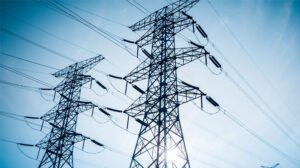The Universal Service Fund (USF) has announced plans to lay 2,000 kilometers of optical fiber cable (OFC) in new projects for the fiscal year 2024-25. The initiative, shared during a meeting of the National Assembly Standing Committee on Information Technology and Telecommunication, is part of USF’s ongoing efforts to expand digital connectivity across Pakistan.
The OFC expansion is part of USF’s Optical Fiber Program, which began in November 2020 to promote deep fiberization at the Union Council (UC) level. To date, 17 major OFC projects have been launched, connecting 884 UCs with 9,068 km of fiber. These projects provide critical backhaul infrastructure for existing 3G/4G mobile broadband networks and pave the way for future 5G expansion.
USF highlighted that the launch of 5G services in rural areas remains pending, as it depends on operators’ business plans and licensing from the Pakistan Telecommunication Authority (PTA). Once licenses are issued, USF will identify unserved and underserved areas for 5G infrastructure development and design projects accordingly.
Addressing Underserved Areas
During the meeting, MNA Zulfiqar Ali Bhatti raised concerns about the lack of telecom services in four underserved locations in the Sargodha district: Chak numbers 67nb, 163nb, 112nb, and 152nb. USF confirmed that these areas have been assessed for intervention, although Chak number 115 was omitted from the PTA’s report. The fund assured the committee that these locations have been noted for future connectivity projects.
USF emphasized its dual focus on expanding physical telecom infrastructure and improving digital literacy, content localization, and public education to bridge the digital divide. While its projects primarily address connectivity through mobile broadband and fiber backhaul, USF acknowledged that eliminating the digital divide by 2030 requires broader measures, including education, socioeconomic interventions, and policy support.
USF stated that while its projects significantly reduce connectivity gaps, achieving a fully connected digital society will require policy support, financial investments, and collaboration with government entities and private stakeholders. The fund will continue optimizing its annual projects based on available resources but noted that eliminating the digital divide is beyond its sole capacity.
















